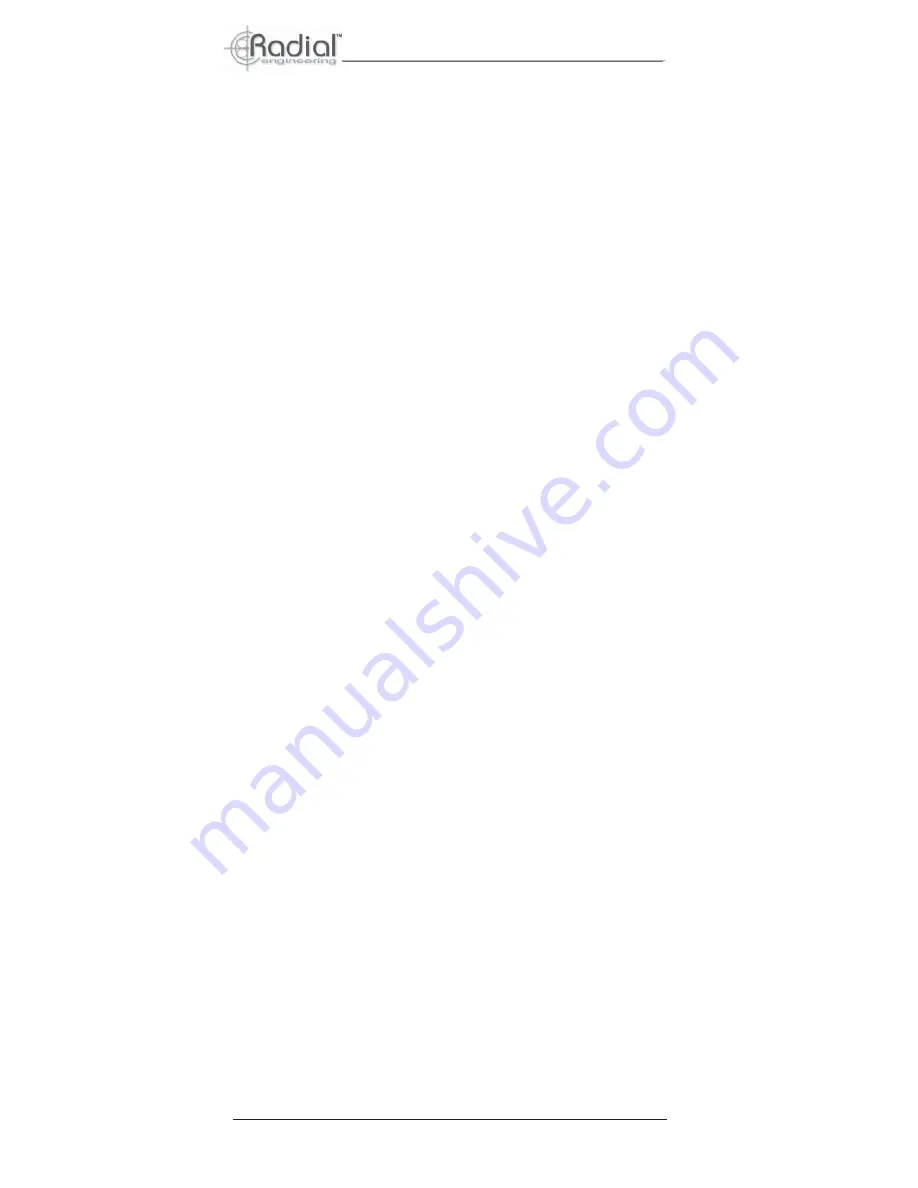
9
Step -3 - Adjusting the level
The X-Amp is equipped with a level control to ensure the
signal coming from the dry track of the mixing console
matches the level from your guitar. Because guitar amplifiers
do not have input level meters, start by taking note of your
amplifier settings by plugging your guitar directly into your
amp. Using your ears is the best way to set the level and
tone. Now, connect the X-Amp to your amp and adjust the
level so that it matches the previous guitar to amp level. If the
level is too hot from your mixer, the clip LED indicator will light
up. Turn down the level from your mixer.
At this point, you have recorded a dry guitar track on track-1
and most likely saved the performance (wet guitar-amp track)
on a separate track. You would now PLAY the dry track into
the X-Amp, which would then drive one or two guitar amps.
These would be mic’d and then recorded on new tracks. The
real magic begins when you start combining these tracks and
adding effects.
You are now set to go! Have fun! Experiment!
Using the X-Amp with keyboards
As described above, keyboards may also enjoy the benefits
of the X-Amp by following the same procedures. There’s no
better way to turn a solo synthesizer track into a ‘barn burner’
than to pass it through a distorted tube guitar amplifier or tube
distortion pedal. Players like the legendary Jan Hammer used
this trick to create those amazing ‘guitar’ solo sounds. This is
also a great way to get more ‘growl’ from those ‘clean’ B3
sounds. Half the magic of a traditional Hammond comes from
the tube amp and Leslie being pushed to the limits. This is
why Keith Emerson also used distorted guitar amps to record
and perform. Try mixing sounds between clean and distorted
ones and have fun!
Using the X-Amp with voice
Often times, voices can be too clean and lack that ‘seasoned’
rough edge. By driving a voice track through the X-Amp into a
distortion pedal like the Radial Tonebone Classic or through an
overdriven amplifier, one can introduce some great effects.
Double the clean track with distorted track and then mix them
to suit. A subtle extra edge is often all that is needed to warm
up a stale track.
Using the X-Amp with guitar effect pedals
You can also use the X-Amp with guitar effect pedals. This is
accomplished either by driving the pedal through a guitar
amplifier or by sending the output of the effect pedal to a
direct box like the Radial JDI and then to the mixer. We
recommend the JDI for this application, as the isolation
transformer in the JDI will help eliminate noise.
True to the Music
X•AMP User Guide
Radial Engineering


































